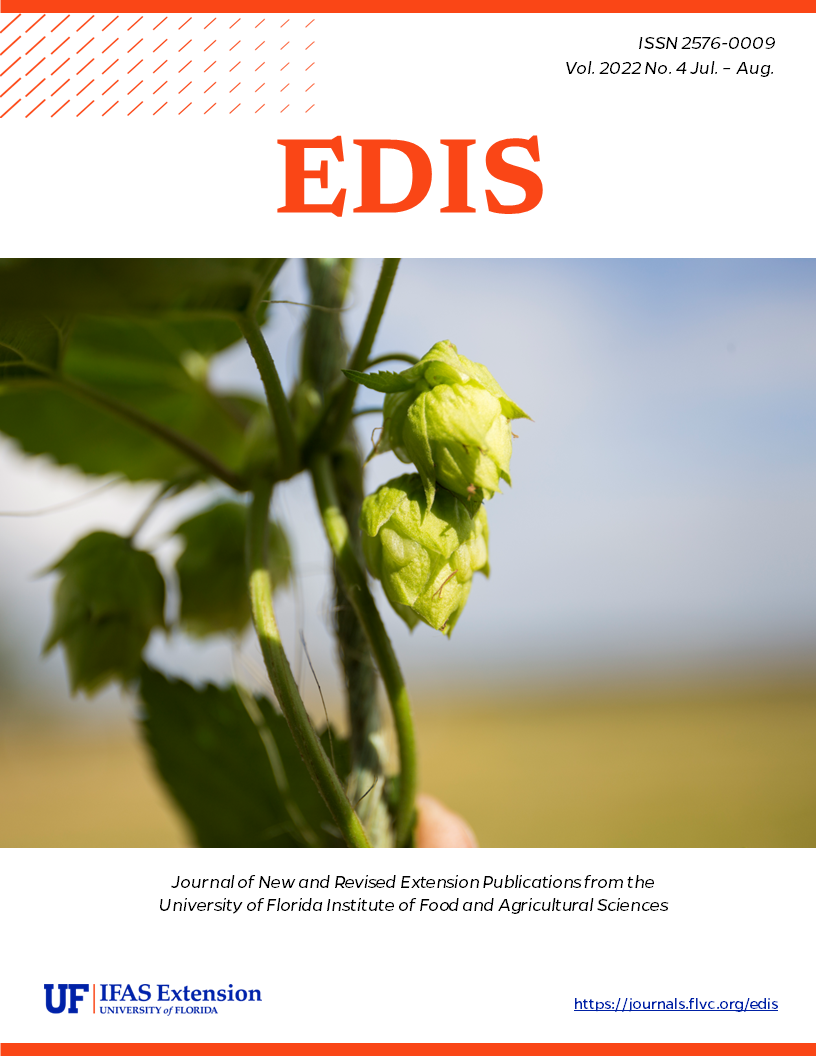Abstract
The weather conditions favoring Blueberry anthracnose fruit rot disease incidence and development can be difficult to predict, and it can significantly impact yield under conducive weather patterns. For that reason, the authors of this new 6-page publication of the UF/IFAS Plant Pathology Department developed and validated a web-based disease alert system for blueberry AFR, the Blueberry Advisory System (BAS), to help blueberry growers in Florida identify weather conditions favorable for the disease and improve disease management. Written by André B. Gama, Douglas A. Phillips, Vinícius A. Cerbaro, Phillip F. Harmon, Clyde W. Fraisse, and Natalia A. Peres.
https://edis.ifas.ufl.edu/pp366
References
Fraisse, C. W., N. E. Breuer, D. Zierden, J. G. Bellow, J. O. Paz, V. E. Cabrera, A. Garcia y Garcia, K. T. Ingram, U. Hatch, G. Hoogenboom, J. W. Jones, and J. J. O’Brien. 2006. “AgClimate: A Climate Forecast Information System for Agricultural Risk Management in the Southeastern USA.” Computers and Electronics in Agriculture 53 (1): 13–27. https://doi.org/10.1016/j.compag.2006.03.002
Gama, A. B., L. G. Cordova, C. S. Rebello, and N. A. Peres. 2021. “Validation of a Decision Support System for Blueberry Anthracnose and Fungicide Sensitivity of Colletotrichum gloeosporioides Isolates.” Plant Disease 105 (6): 1806–1813. https://doi.org/10.1094/PDIS-09-20-1961-RE
Phillips, D. A., M. C. Velez-Climent, P. F. Harmon, and P. R. Munoz. 2018. “Anthracnose on Southern Highbush Blueberry.” EDIS 2018 (3). https://doi.org/10.32473/edis-pp337-2018
Waller, T. J., J. Vaiciunas, C. Constantelos, and P. V. Oudemans. 2017. “Evidence That Blueberry Floral Extracts Influence Secondary Conidiation and Appressorial Formation of Colletotrichum fioriniae.” Phytopathology 108 (5): 561–567. https://doi.org/10.1094/phyto-07-17-0263-r
Wilson, L., L. Madden, and M. Ellis. 1990. “Influence of Temperature and Wetness Duration on Infection of Immature and Mature Strawberry Fruit by Colletotrichum acutatum.” Phytopathology 80 (1): 111–116. https://doi.org/10.1094/Phyto-80-111

